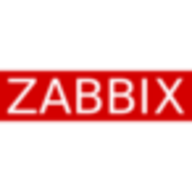

Splunk AppDynamics and Zabbix are two competing solutions in the monitoring software category. Based on the data, Splunk AppDynamics has a slight advantage due to its comprehensive application performance monitoring features and superior customer service.
Features: Splunk AppDynamics specializes in application flow maps, business transaction tracking, and auto-baselining of applications. It provides intuitive dashboards and proactive alerting for a comprehensive view of application performance. Zabbix stands out for its network discovery and flexible monitoring capabilities, offering automated network discovery and robust alerting options.
Room for Improvement: Splunk AppDynamics users seek better data granularity, a more intuitive interface, and expanded network monitoring. Improvements in LDAP integration and reducing reliance on Flash are also desired. Zabbix users often request enhanced reporting features, improved UI, and advanced automation. There's also a need for better SNMP auto-discovery.
Ease of Deployment and Customer Service: Splunk AppDynamics is available across Public Cloud, Hybrid Cloud, and On-premises, with robust customer service praised for its swift and knowledgeable support. Zabbix primarily operates in On-premises and Hybrid Cloud environments, benefiting from a large open-source community but lacking the rapid support structure of Splunk AppDynamics.
Pricing and ROI: Splunk AppDynamics is a premium solution with a high initial outlay but delivers significant ROI by enhancing performance monitoring and reducing mean time to recovery. Zabbix, as a cost-effective open-source alternative with no licensing fees, is ideal for organizations with skilled in-house resources to manage deployment and support.
According to errors, exceptions, and code-level details related to their application performance on a daily basis, the application development team tries to help with Splunk AppDynamics to reduce errors and exceptions, which helps the end users get application availability and feel more confident.
To understand the magnitude of it, when the company asked to replace Splunk AppDynamics with another tool, I indicated that for the proposed tool, we would need five people to do the analysis that Splunk AppDynamics enables me to do.
It's very hard to find ROI because we are currently focused only on the on-premises applications.
AppDynamics is much more helpful.
We got a contact, an account manager, to work directly with for technical support.
They help us resolve any issues raised by our team relating to operations, application instrumentation, or any other issues.
It is so straightforward that I have never had to use the support.
We have reached maximum capacity in our tier, and extending capacity has not been cost-effective from Splunk's perspective.
I would rate the scalability of Splunk AppDynamics as a nine out of ten.
I assess how Splunk AppDynamics scales with the growing needs of my organization as good, since we are growing and adding more servers.
Zabbix is very scalable and lightweight.
Zabbix has high scalability.
I would rate its scalability ten out of ten.
It is necessary to conduct appropriate testing before deploying them in production to prevent potential outages.
There are no issues or bugs with the 20.4 version; it is very stable with no functionality or operational issues.
I can rate it nine out of ten.
Zabbix is very scalable and lightweight.
Zabbix is quite stable, and we haven't had any problems with Zabbix itself.
Splunk AppDynamics does not support the complete MELT framework, which includes metrics, events, logging, and tracing for the entire stack.
If AppDynamics could develop a means to monitor without an agent, it could significantly improve application performance and reduce potential problems.
A good integration with Splunk would be very interesting, as Splunk is a good product for logs, and that part is currently missing in Splunk AppDynamics.
The only issue I can note is that it's Linux-based, and Linux documentation is not the best.
We completed a three-year deal for Splunk and for AppDynamics, which costs millions of dollars.
Customers have to pay a premium price, however, they receive considerable value from the product.
All these solutions at the moment are cheap, but it is like paying for insurance; you pay insurance to avoid major damage.
It is literally free.
We have multiple tools, but end users prefer to use Splunk AppDynamics because their portal navigation is very simple and clear.
The real user monitoring and digital experience monitoring effectively track actual user experience with the applications, including page loading, interaction time for both desktop and mobile applications.
The feature that I appreciate in AppDynamics Browser Real-User Monitoring is the intuitive and user-friendly dynamic mapping it creates for workflows.
If disk usage surpasses a threshold, say 70%, I receive alerts and can take proactive action.
Zabbix has a lot of features, including monitoring, status updates, and collecting information telemetry from storages and servers as well.
Zabbix is Linux-based open-source software, and the main use case is to reduce costs.
| Product | Market Share (%) |
|---|---|
| Splunk AppDynamics | 4.1% |
| Zabbix | 3.2% |
| Other | 92.7% |


| Company Size | Count |
|---|---|
| Small Business | 55 |
| Midsize Enterprise | 36 |
| Large Enterprise | 188 |
| Company Size | Count |
|---|---|
| Small Business | 53 |
| Midsize Enterprise | 23 |
| Large Enterprise | 34 |
Splunk AppDynamics enhances application performance monitoring with advanced diagnostics and real-time insights, offering seamless end-to-end transaction tracking and infrastructure visibility.
AppDynamics provides critical tools for businesses to analyze application behavior and performance. Through innovative features like transaction snapshot analysis and adaptable dashboards, users can quickly identify and address issues, ensuring high levels of system uptime and efficiency. It is designed to support complex environments including Kubernetes and AWS, enhancing user experience by detecting performance issues early. Despite needing improvements in network monitoring and integration, it remains a robust option for tracking application health.
What are the key features of AppDynamics?In industries like financial services and e-commerce, AppDynamics facilitates performance tracking across distributed systems, optimizing infrastructure to meet consumer demands. It excels in environments needing precise transaction monitoring and is pivotal in delivering high value and satisfaction.
Zabbix is an open-source monitoring software that provides real-time monitoring and alerting for servers, networks, applications, and services.
It offers a wide range of features including data collection, visualization, and reporting.
With its user-friendly interface and customizable dashboards, Zabbix helps organizations ensure the availability and performance of their IT infrastructure.
We monitor all Application Performance Monitoring (APM) and Observability reviews to prevent fraudulent reviews and keep review quality high. We do not post reviews by company employees or direct competitors. We validate each review for authenticity via cross-reference with LinkedIn, and personal follow-up with the reviewer when necessary.